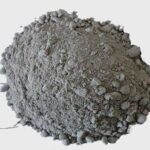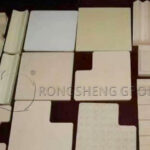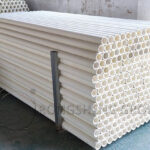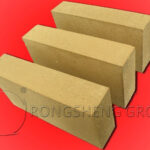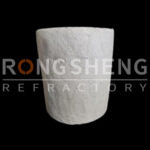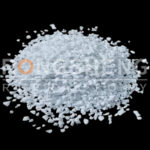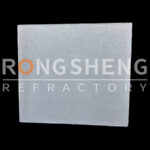Phosphate Bonded Castable Description
Phosphate bonded castable main materials are phosphate or poly phosphate binder, refractory aggregate and fines, additives. Phosphate binder can be divided into 2 categories: one is acidic phosphate binder, such as Al(H2PO4)3, H3PO4, which is usually used as neutral or acidic refractory material binder, for example, as the binder of silica castable, clay castable, high alumina castable, corundum castable, zircon mullite castable, zircon corundum castable, etc. The other is poly phosphate binder, such as NO5P3O10, (NaPO3)6, which are mainly used as basic refractory castable binder, such as magnesia castable, magnesia alumina castable and so on.
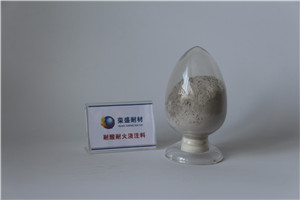
- Acidic Phosphate Bonded Castable
Acidic phosphate bonded castable will not or slowly react with acidic or neutral refractory material, so coagulation and hardening function is realized by adding coagulator which will react with acidic phosphate. Coagulator can be used are MgO, CaO·Al2O3, CaO·2Al2O3, NH4F, ZnO, Nacl, talc and so on. But the most often used coagulators are MgO and CaO·Al2O3.
Al(H2PO4)3 bonded castable physiochemical index
| Item | Clay | High alumina I | High alumina II |
| Al2O3 % | 45 | 60 | 75 |
| Dried Bulk Density g/cm3 | 2.23 | 2.34 | 2.60 |
| Thermal shock resistance (800℃, water cooling) | >50 | >50 | >50 |
| Cold compression strength(110℃, 24h) Mpa | 26.0 | 28.0 | 34.0 |
| Linear change rate(1400℃,3h) % | +0.8 | +0.72 | +0.45 |
| Refractoriness under load (0.2Mpa)℃ | 1410 | 1470 | 1450 |
Acidic phosphate bonded castable applications
Compared with calcium aluminate cement bonded castable, acidic phosphate bonded castable has better cold compression strength and thermal shock resistance, so is usually used as industrial furnaces linings and middle temperature abrasion resistant linings where temperature fluctuation is frequent, it is also used as thermal patching material.
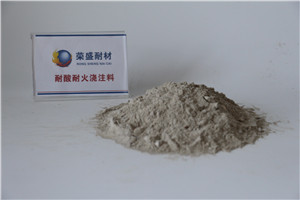
- Polyphosphate Bonded Castable
Water dissolved Polyphosphate can react with MgO or CaO in basic refractory powder material at room temperature and produce composite phosphate and make the material harden. But the reaction speed is slow, so polyphosphate is suitable to be used as basic refractory castable binder and there is no need to add coagulator. Take tri-polyphosphate for example, the higher the temperature is, the higher the solubility of sodium tri-polyphosphate is, so appropriately increase water temperature can accelerate reaction speed of polyphosphate solution and MgO in basic refractory material, therefore, the hardening speed is accelerated.
Polyphosphate Bonded Magnesia Castable Index
| Item | Clay | High alumina I | High alumina II |
| Al2O3 % | 40~45 | 60~65 | 70~75 |
| SiO2 % | 35~40 | 23~30 | 15~20 |
| CaO % | 5~6 | 5~6 | 5~6 |
| Bulk Density(110℃, 24h) g/cm3 | 2.0~2.1 | 2.4~2.5 | 2.7~2.8 |
| Modulus of Rupture (110℃, 24h) Mpa | 4.5~6 | 5~6 | 5.5~6 |
| Cold compression strength(110℃, 24h) Mpa | 30~35 | 40~45 | 45~50 |
| Linear change rate(1350℃) % | +0.1~0.3 | -0.1~0.3 | -0.1~0.5 |
| Working temperature ℃ | 1350 | 1450 | 1550 |
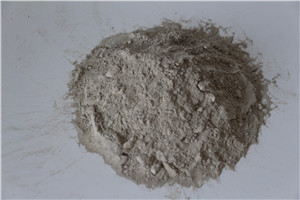
Polyphosphate Bonded Basic Castable Applications
Polyphosphate bonded basic castable can be used in the inner lining of high temperature smelting furnaces, high temperature metal liquid vessels and launders. Polyphosphate bonded basic castable can also be used as patching material of electric arc furnace linings.
